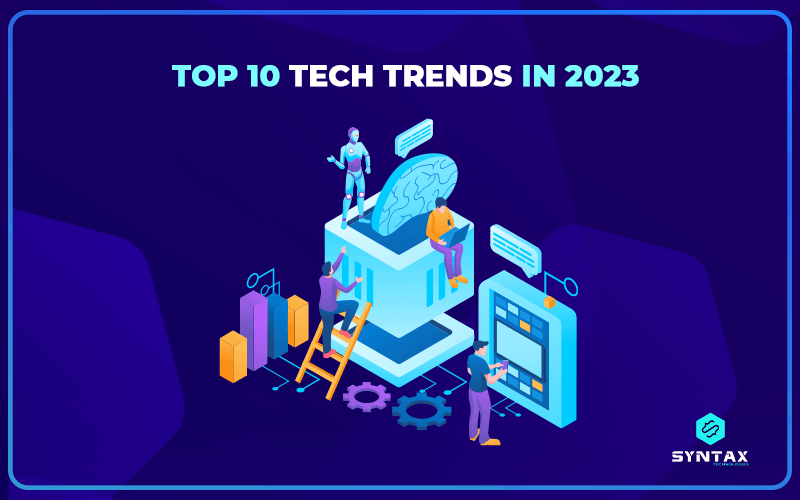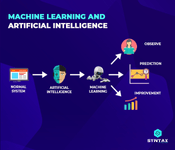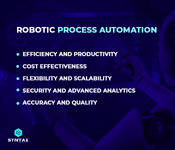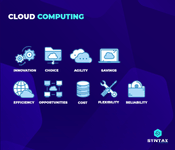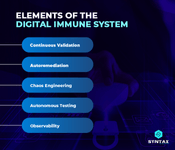The tech industry is constantly evolving and new trends emerge each year. 2023 will be no different as top technology trends promise to revolutionize the digital world, the way people use technology and further expand the capabilities offered by various devices, applications, and services.
From artificial intelligence (AI) and machine learning (ML) to quantum computing to augmented reality (AR), there are several top technologies that will shape the future of the IT/tech industry in 2023.
In this blog, we shall look at 10 top new technology trends which are expected to dominate the tech terrain in 2023.
Artificial Intelligence (AI) and Machine Learning (ML)
Artificial Intelligence (AI) and Machine Learning (ML) are expected to be two of the top technologies in 2023. AI is already being used by business leaders in a variety of applications, from automating routine tasks to making decisions based on data insights.
ML on the other hand, enables machines and operating systems to learn from data and identify patterns that can be used for predictive analytics. Together, these two technologies will continue to shape how we interact with technology as they become more advanced and sophisticated over the next few years, brining about a digital transformation.
As advancements are made in areas such as natural language processing (NLP), computer vision, and deep learning algorithms, AI/ML will become even more prevalent across all sectors. Companies will look to leverage this technology for improved automation capabilities and a better understanding of customer behavior in business operations and business processes.
Quantum Computing
The rise of quantum computing is set to revolutionize the tech industry over the coming years. By leveraging the principles of quantum mechanics, these computers promise to process large amounts of data faster than ever before. This technology has already seen applications in areas such as medicine, aerospace engineering and finance, and is all set to provide new technology solutions in other sectors over the next few years.
In addition, it may help break through certain encryption schemes that are currently used for security purposes due to their increased processing capabilities compared to traditional computing technologies. As a result, quantum computing is likely to become more popular in the years ahead as organizations look for ways to make their data processing more efficient and their security systems and networks more secure.
Cyber Security
In the wake of increasing cyber threats, Cyber Security has become top priority across all industries. As digital transformation continues to take place, companies will be looking for ways to protect their data, their systems, and their entire virtual world, from potential breaches and malicious attacks.
2023 will see the further strengthening of emerging technologies like Artificial Intelligence (AI) and Machine Learning (ML), which can be used to detect and respond quickly to attacks, allowing organizations greater protection against online threats.
In addition, biometrics and other forms of authentication are expected to become more commonplace as companies look for ways to further secure their data. As cyber threats continue to evolve, so too will the technologies aimed at security management; making cyber security one of the top technology trends for 2023.
Articles you may like:
“Is Cyber Security Hard? Let us Find Out“
“How to Get into Cyber Security?“
“Top 40 Cyber Security Interview Questions“
?
Robotic Process Automation (RPA)
RPA is a form of artificial intelligence (AI) that allows software robots to mimic human actions in order to automate tasks. This technology is being adopted across a range of industries as a way to improve efficiency and productivity, while reducing costs.
RPA can be used for tasks such as data entry, claims processing, customer service, and fraud detection. As the technology continues to evolve, it is expected to become more sophisticated in its capabilities, and by 2023 it will be widely implemented across a range of sectors.
By automating mundane tasks that would otherwise require manual labor, RPA can reduce costs while increasing the speed at which tasks are completed. It also helps to improve customer experience by providing faster responses and accurate data.
Cloud Computing
Cloud computing has seen tremendous growth in recent years, and is all set to become even more popular over the next few years. This technology provides a range of benefits, such as scalability, cost savings, and increased efficiency; making it attractive for companies across a range of sectors.
By 2023 it is expected that cloud will be the primary platform for delivering applications and services, with businesses looking to leverage its advantages for improved collaboration and performance. In addition, cloud-based artificial intelligence (AI) solutions are also expected to become more commonplace as organizations look to capitalize on their predictive analytics capabilities.
Cloud services provide businesses with a range of advantages, including scalability, cost savings, and increased efficiency. Cloud computing enables organizations to store data and applications remotely in the cloud, allowing them to access it from anywhere at any time.
In addition, cloud technologies allow companies to customize their applications based on their specific needs. For example, industry cloud platforms can be used to create custom software tailored for particular sectors such as finance or healthcare.
Furthermore, cloud computing also offers improved security over on-site servers due to its distributed nature; ensuring that data is secure and access is restricted to authorized personnel.
Augmented Reality/Virtual Reality (AR/VR)
AR and virtual reality VR are two technologies that have recently been gaining traction and are being considered trending technologies due to their wide-ranging applications, from gaming and entertainment to business operations. By 2023 these technologies are expected to become even more widespread as the technology advances and new applications continue to emerge.
Augmented reality (AR) is a technology that combines digital elements with the real world. It uses computer-generated images, videos, sound, and other virtual enhancements to create an interactive experience for viewers.
Virtual Reality (VR) is a technology that simulates a user?s physical presence in an artificial environment. It enables users to interact with virtual objects and navigate their virtual world using visual, auditory, and even haptic feedback.
AR/VR can be used for gaming, entertainment, as well as for educational and training purposes. With its ability to create immersive experiences, they have already seen uses such as providing virtual tours of properties and museums, or allowing surgeons to practice surgery without actually being in the operating room.
Blockchain Technology
Blockchain technology is a decentralized system for recording, storing, and transferring digital information. This technology offers many benefits such as transparency, security, and immutability; making it an attractive option for business leaders looking to improve their operations in the coming years.
By 2023, blockchain technology is expected to become even more widespread as businesses look to capitalize on its advantages. It is likely to be used for a range of use cases such as secure payments, smart contracts, and digital identity management.
In addition, the technology has applications in several industries, including finance, healthcare, energy, and logistics; making it one of the top tech trends in 2023.
Blockchain technology has already seen applications such as smart contracts, supply chain management, digital asset protection, and more. By 2023, it is likely that blockchain-based wireless technology will become even more commonplace in a variety of sectors; allowing companies to securely transfer information and payments without having to rely on physical networks.
Internet of Things (IoT)
Internet of Things (IoT) is a technology that enables physical devices such as appliances and vehicles to communicate with each other over the Internet. This technology is expected to become even more widespread over the next few years due to its potential for improving efficiency and productivity, while reducing costs.
By 2023, it is expected that IoT-enabled devices like sensors, cameras, and robots will be used in everyday life and across industries ranging from manufacturing to health care.
Additionally, the technology can also be utilized for predictive analytics to improve decision making and operations.
Furthermore, with the combination of AI and IoT, businesses can gain real-time insights into their customers? needs and preferences; helping them better personalize their services in order to remain competitive. As such, IoT is set to become one of the top technology trend in 2023.
Sustainable Technology – New Energy Solutions
The trend toward sustainability and sustainable technologies is quickly becoming a top priority for businesses, governments, and individuals alike.
In order to meet this goal, many organizations are turning to new green energy choices in the form of renewable energy sources like solar and wind power, along with emissions management software.
By 2023 it is expected that renewable energy will become an even more important part of our global energy mix as research continues to improve its efficacy and affordability.
These new technologies could potentially be used in a wide range of applications such as powering homes, providing heat and cooling for buildings, or even producing electricity for electric vehicles.
Sustainable technology has the potential to revolutionize how we generate and use energy; making it one of the top tech trends in 2023.
Organization’s Digital Immune System
Organizations are increasingly turning to digital immune systems to protect against the ever-increasing threats of cyber attacks and other kinds of operational and security risks.
A digital immune system is a combination of software and hardware that provides early detection and prevention of malicious attacks targeting an organization’s data or networks (digital universe).
By 2023, it is expected to become even more widespread as businesses look to take advantage of its benefits. It can be used for both proactive security measures such as continuous monitoring for threats, as well as reactive measures such as quickly responding to incidents in order to contain any damage that may have been done.
Furthermore, this technology also has potential for use in areas such as fraud prevention, identity management, and compliance; making it one of the prominent new technology trends in 2023.
Conclusion
In summary, it is clear that 2023 will be marked by advanced and new technologies which would play a prominent role in defining the picture of the intelligent world.
These breakthroughs have the potential to revolutionize how we do business, improve operational efficiency and productivity, as well as create a more sustainable future and digital world for us all. Businesses who embrace these top tech trends will certainly be having competitive advantage in the new decade.
It is evident that the tech domain is fast expanding and is in a state of constant flux. What is important is to continuously upgrade and hone one’s skills in order to become tech ready.
We, at Syntax Technologies, provide you with the unparalleled opportunity of developing skills in some of the most in-demand domains within the tech industry.
Check out our courses.
